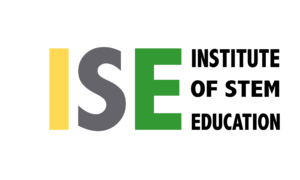 The Institute of STEM Education is grateful for the generous funding from the National Science Foundation for the following education, outreach, research and development projects. Any opinions, findings, and conclusions or recommendations expressed on this website or the resources created and disseminated by SES are those of the author(s) and do not necessarily reflect the views of the National Science Foundation.
The Institute of STEM Education is grateful for the generous funding from the National Science Foundation for the following education, outreach, research and development projects. Any opinions, findings, and conclusions or recommendations expressed on this website or the resources created and disseminated by SES are those of the author(s) and do not necessarily reflect the views of the National Science Foundation.
Teen Science Café Network
We are creating and nurturing a community of teens and adults creating a space where teens can learn from leading experts about science and technology changing their world. Teen Cafés are informal, interactive programs that promote exploration, creativity, and life long learning. We support and freely share our expertise with others who would like to start a Teen Café. Small grants for start up are available. See http://teensciencecafe.org – NSF, Grant No. 1223830
The Nexus of Energy, Water, and Climate: From Understanding to Action
We developed two card games that teach about the Nexus in ways that engage teens and adults in conversation and reflection on how we might address the grand challenge of producing sufficient energy, within a limited water budget and without further adverse effects on our climate. The games are available commercially through several game outlets (http://www.isenm.org/shop/, http://boardgamegeek.com) and distribution is managed by the not-for-profit Institute of Science Education New Mexico. NSF, Grant No. 1011086
Café Scientifique
The New Mexico Café Scientifique is a popular program that brings teens from all walks of life together to explore, discuss, and debate the latest ideas in science and technology. Stimulating conversations with experts working on the cutting-edge of scientific research take place in a social setting. It is a place where all teens are welcome and ideas are shared. Cafés take place in popular locations in Albuquerque, Rio Rancho, Española, Taos, and Los Alamos. The Café program is for, and is run by, high school age teens. Motivated teens from the participating towns have volunteered to play a leadership role in organizing and running the Café program as members of the Teen Leadership Team. The program launched in Fall 2007 and continues today with funding from the State of New Mexico and other foundations. See cafenm.org – NSF, Grant No. 0714762
DLESE Project Office – project activities ended in 2007
The Institute of STEM Education was selected through a competitive process to establish a DLESE Project Office responsible for leading community discussions surrounding the growth of the DLESE digital collection, for coordinating the development of the array of services that will support the creation of exemplary resources and their use in enhancing geoscience education, and for leading the community-building activities of the core service groups.
The Digital Library for Earth System Education (DLESE) was a distributed digital library with the goals of (1) establishing the library as the premier trusted source for high quality Earth system educational resources and service; (2) promoting sustainable library growth (in usage, resources, and services) through community building and community participation in library governance, development, and operation; and (3) serving as a catalyst for Earth system science education reform. It is presently maintained through UCAR. See http://www.dlese-project.org/index.html
Peer Review of Digital Resources
A workshop proposal for developing a DLESE Quality Assurance Plan – NSF, Grant Nos. 0434212 & 0447722
Providing Leadership, Coordination and Community Building through the DLESE Project Office – NSF, Grant No. 0453722
CACOSI – project activities ended in 2007
Creating a Culture of Scientific Inquiry – NSF, Grant No. 0503529
(Creating A Culture Of Scientific Inquiry) provided an educational experience for minority, primarily Native American, middle and high school students in which they explore the environment surrounding them from historical, cultural, and scientific perspectives. Students were conducting long-term investigations and monitoring the Earth system in and around the tribal lands and the neighboring Northern New Mexico environs. The student and teachers learned about Earth processes through experimentation in the classroom throughout the school year and during a weeklong summer science camp with professional Earth and environmental scientists.
Natural Hazard GIS Case Studies
Collaborative Project: Investigating Past, Present and Future Natural Hazards with GIS – NSF, Grant Nos. 0521936 & 0341207
Earthscope E&O
A Continental- Scale Education and Outreach Puzzle: Putting the Pieces Together – an Earthscope Education and Outreach workshop – NSF, Grant Nos. 0438085 & 0228250
Eathscope: A New View of Earth and Earth Science – NSF, Grant Nos. 0431360 & 0208457
SAGUARO
Integrating GIS and Remote Sensing Research in the High School Classroom (a pilot project) – NSF, Grant No. 9809704
Using Computer Technology and Multimedia Materials in Introductory Geosciences Courses – NSF, Grant No. 9555205
Advancing Computational and Visualization Skills in Geosciences Courses – NSF, Grant No. 9980958
Integrating Scientific Research and Technology into 9-12 Grade Earth Science – NSF, Grant Nos. 0442136 & 9986613
Visit: www.isenm.org/saguaro
SpiNet – project activities ended in 2008
EarthScope: A new view of Earth and Earth Science – NSF, Grant No. 0431360
The Continental-Scale Education and Outreach Program – NSF, Grant No. 0438085
A Workshop to Achieve Broader Impacts of Geophysical Research – NSF, Grant No. 0542459
Our seismology outreach program served teachers across the country and around the world using seismic instruments or real-time seismic data in K-16 classrooms. We provided a website with answers to frequently asked questions, as well as telephone and electronic mail support. Additionally, our site includes tools to share seismic data in real-time, classroom activities, data on historical events, and technical support documents for seismic instruments. Our hope was to bridge the gap between science classrooms to create an international educational seismic network.
